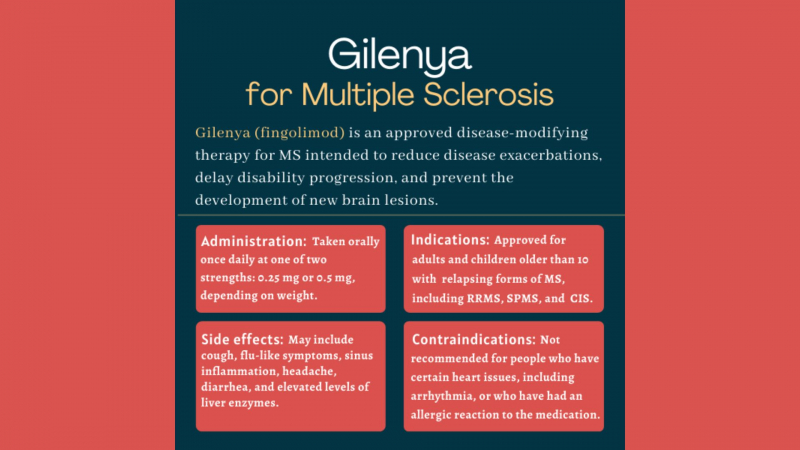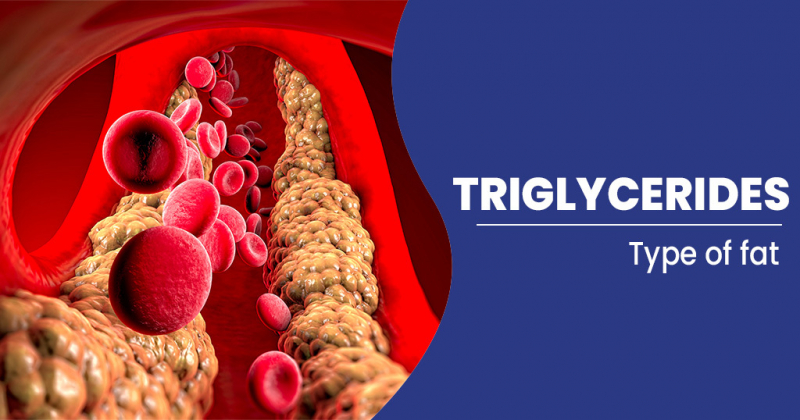Downsides

Top 3 in Top 7 Things to Know About Gilenya
If you are between the ages of 18 and 60, do not take any other medications, and have no other medical conditions, you are more likely to experience the following side effects:
- Abdominal pain, a rise in blood triglycerides, an increased risk of basal cell carcinoma (2%), skin papilloma (3%), an increased risk of infections like the flu, sinusitis, bronchitis, herpes zoster, and tinea versicolor, back pain or other types of pain, blood disorders, blurred vision, bradycardia (slow heartbeat), cough, diarrhea, hair loss, headache, high blood pressure, liver enzyme
- There have been instances of progressive multifocal leukoencephalopathy (PML) in MS patients who took Gilenya. The JC virus (JCV) causes PML, an opportunistic viral infection of the brain that frequently results in death or severe disability. There have also been reports of respiratory effects and posterior reversible encephalopathy syndrome (PRES).
- Gilenya rarely causes a side effect called hair loss. In clinical trials, Gilenya was taken by 3% of those who experienced hair loss, compared to 2% of those who received a placebo.
- Gilenya should not be administered to patients with a baseline QTc interval of less than 500 msec, with cardiac arrhythmias requiring anti-arrhythmic treatment with Class Ia or Class III anti-arrhythmic drugs, with a history of an allergic reaction to fingolimod or any of the excipients in Gilenya, or with other cardiovascular conditions such as unstable angina, stroke, or severe heart failure.
- Before beginning Gilenya treatment, get a CBC. Through redistribution in secondary lymphoid organs, gilenya reduces peripheral lymphocyte count to 20%–30% of baseline values in a dose-dependent manner. This means that it is impossible to assess the lymphocyte levels in a patient receiving Gilenya therapy using peripheral blood lymphocyte counts. Obtain serum transaminases (ALT and AST) and total bilirubin levels six months after starting Gilenya.
- Before starting Gilenya, patients with pre-existing conditions such as ischemic heart disease, myocardial infarction history, or cerebrovascular disease should undergo a comprehensive cardiac evaluation. Before beginning treatment with Gilenya, conduct a thorough medication review to look for additional drugs that may also slow the heart rate and consider modifying the regimen.
- Gilenya does not cure MS; it only reduces the number of relapses.
- Gilenya suppresses the immune system and reduces an individual's ability to fight infection. This ability will be harmed further if the person is also taking other immune-suppressing drugs, such as chemotherapy, immune-modulating therapies, or other immunosuppressants. This immune-suppressive effect will last for up to two months after you stop taking Gilenya. Before starting Gilenya, review all other immune-suppressing medications, especially those with a long half-life whose effects may last for weeks after discontinuation, such as natalizumab, teriflunomide, or mitoxantrone. Gilenya has been linked to life-threatening and fatal infections.
- Gilenya will also suppress the immune response to live vaccines like MMR and varicella. Before Gilenya is administered, all vaccines should be up to date. Before beginning Gilenya treatment, test patients for antibodies to varicella zoster virus (VZV) and vaccinate all antibody-negative patients with VZV vaccination. If possible, all pediatric patients should complete all immunizations in accordance with current immunization guidelines before beginning Gilenya therapy.
- Gilenya has been linked to an increased risk of macular edema. Perform an eye examination before beginning treatment, again 3 to 4 months later, and at any time a patient reports visual disturbances while on Gilenya therapy.
- Gilenya can cause bradycardia, especially during the first dose. The maximum drop in heart rate usually occurs within 6 hours of the first dose and returns to baseline levels 8 to 10 hours later. Because of physiological diurnal variation, there is also a second period of heart rate decrease within 24 hours. In clinical trials, 0.6% of patients receiving Gilenya 0.5 mg and 0.1% of patients receiving placebo experienced symptomatic bradycardia after the first dose. The majority of people were asymptomatic, but some had hypotension, dizziness, fatigue, palpitations, and/or chest pain.
- Gilenya should be started in a setting where people can be appropriately managed for symptomatic bradycardia (slow heartbeat) for 6 hours (sometimes longer). All patients should have an ECG before the first dose and at the end of the observation period. Every hour for the next 6 hours, the patient's pulse and blood pressure should be taken.
- If any of the following are present, continue monitoring after 6 hours: a heart rate of less than 45 beats per minute in adults, less than 55 beats per minute in pediatric patients 12 years of age and older, or less than 60 beats per minute in pediatric patients 10 or 11 years of age; the heart rate taken 6 hours postdose is at its lowest value, implying that the maximum pharmacodynamic effect on the heart has not occurred; the ECG obtained 6 hours postdose shows new onset second degree or higher AV block. If no pharmacological treatment is required, continue monitoring until symptoms have resolved; otherwise, continue monitoring overnight and repeat 6-hour monitoring after the second dose. Overnight ECG monitoring may be required for some patients.
- All patients must have first-dose bradycardia monitoring if Gilenya is stopped with a one-day or more interruption during the first two weeks or during weeks 3 and 4 of treatment, after treatment interruptions of more than 7 days. For interruptions of more than 14 days, first-dose monitoring is required.
- Gilenya is costly. A supply of 30 capsules of Gilenya 0.5mg costs $9053 or about $302 per capsule. But 96 to 99% of those who have private or public health insurance, are qualified for Medicare, or are on Medicaid are covered for Gilenya. The GILENYA Medical Co-Pay Support Program also offers co-pay assistance. Most people don't have to.
- Pre-test and initial observation expenses might also be covered.
- Numerous medications, particularly those that slow the heart rate or have an impact on the immune system, interact with Gilenya.
- Some Gilenya metabolites may have blood levels that are up to 13 times higher in people with kidney disease. The results of this cannot yet be determined due to a lack of research.
- Gilenya can harm a developing baby, and animal studies have shown developmental toxicity at doses lower than the recommended human dose. To avoid pregnancy during and for two months after stopping Gilenya treatment, all females of reproductive potential should use effective contraception.
Seniors and children, people with certain medical conditions (such as liver or kidney problems, heart disease, diabetes, seizures), or people who take other medications are more likely to experience a broader range of side effects.








